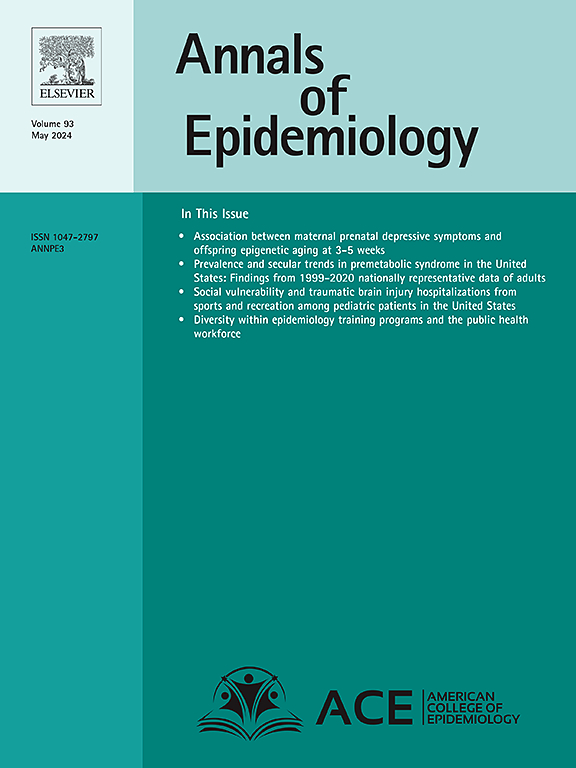实现2025年国家减少致命药物过量目标的好处,AEP-D-25-00208 R2
IF 3
3区 医学
Q1 PUBLIC, ENVIRONMENTAL & OCCUPATIONAL HEALTH
引用次数: 0
摘要
截至2024年12月的一年,疾病控制和预防中心(CDC)关于毒品死亡的临时数据表明,2025年将毒品死亡人数减少到81,000或更少的国家目标提前一年实现。我们估计了实现这一目标对2024年公共卫生的影响,并分析了2025年三种情况的影响:药物死亡人数继续下降、停滞不前或进展倒退。方法将scdc 2024年数据与2023年数据进行比较,估计挽救生命、挽救生命年限和统计挽救生命的估值。将截至2025年12月的三种情景与2024年的数据进行比较,以估计对相同指标的影响。结果与2023年相比,2024年的药物死亡进展导致29,646人获救,挽救了928,916年的生命,统计上挽救的生命价值从1800亿美元到5840亿美元不等。如果到2025年,毒品致死人数也能出现类似的下降,就能再挽救21659人的生命。然而,如果到2025年毒品致死人数持平或上升,就会失去挽救生命的机会。结论提前一年实现国家目标,2024年实现了可观的公共卫生效益。现在,计划和政策努力必须防止停滞或倒退。本文章由计算机程序翻译,如有差异,请以英文原文为准。
Benefits of reaching the national 2025 goal for reduction in fatal drug overdoses, AEP-D-25-00208 R2
Purpose
Centers for Disease Control and Prevention (CDC) provisional data on drug fatalities for year ending December 2024 indicates that the 2025 national goal of reducing drug fatalities to 81,000 or fewer was met one year early. We estimate the 2024 public health impacts of meeting that goal and analyze the impacts of three scenarios for 2025: continued downward trajectory of drug fatalities, stagnation, or regression of progress.
Methods
CDC 2024 data was compared to 2023 data to estimate lives saved, years of life saved, and valuation of statistical lives saved. Three scenarios for year ending December 2025 were compared to 2024 data to estimate the impact on the same metrics.
Results
Drug fatality progress in 2024 relative to 2023 resulted in 29,646 lives saved, 928,916 years of life saved, and valuation of statistical lives saved ranging from $180 billion to $584 billion. If similar percentage declines in drug fatalities occur in 2025, another 21,659 lives would be saved. However, if drug fatalities flatten or rise in 2025, opportunities to save lives be lost.
Conclusion
Meeting the national goal one year early resulted in substantial public health benefits in 2024. Now, programmatic and policy efforts must prevent stagnation or backsliding.
求助全文
通过发布文献求助,成功后即可免费获取论文全文。
去求助
来源期刊

Annals of Epidemiology
医学-公共卫生、环境卫生与职业卫生
CiteScore
7.40
自引率
1.80%
发文量
207
审稿时长
59 days
期刊介绍:
The journal emphasizes the application of epidemiologic methods to issues that affect the distribution and determinants of human illness in diverse contexts. Its primary focus is on chronic and acute conditions of diverse etiologies and of major importance to clinical medicine, public health, and health care delivery.
 求助内容:
求助内容: 应助结果提醒方式:
应助结果提醒方式:


